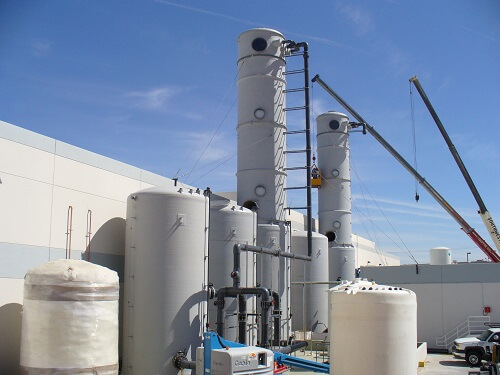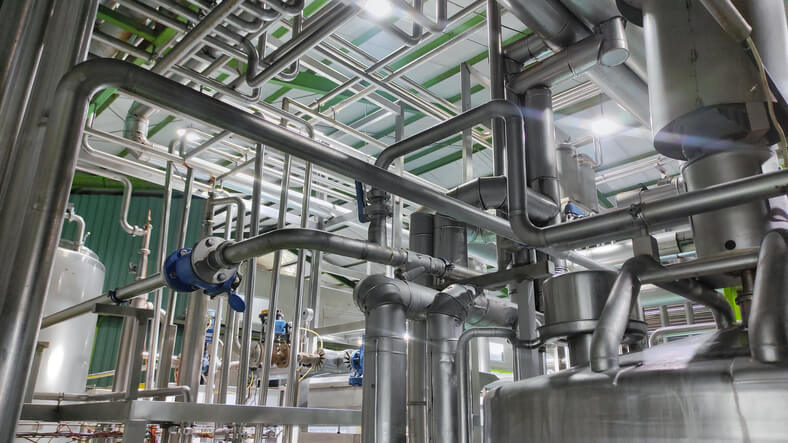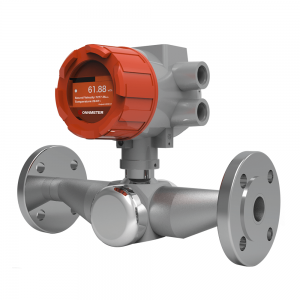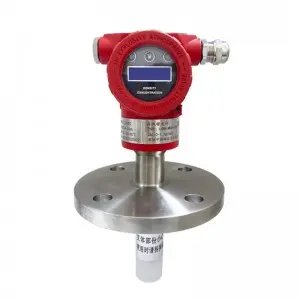Phosgene scrubbing is a critical process to remove this dangerous gas from industrial emissions, protecting workers, communities, and the environment while ensuring compliance with stringent regulations like those from the Environmental Protection Agency (EPA).
Central to this process is the scrubbing liquid concentration meter, a device that monitors the concentration of scrubbing liquids like sodium hydroxide (NaOH) to maintain optimal absorption. By preventing issues like under-dilution or over-dilution, these meters enhance the performance of gas scrubbing systems.
Lonnmeter, a leading and experienced manufacturer for intelligent process sensors, excels in producing durable industrial process sensors to improve automation level of integrate production line. Whether you're an isocyanate producer, polycarbonate manufacturer, or manage a waste management facility, Lonnmeter inline concentration meter are go-to solutions to improve efficiency and reduce costs.
 Understanding Phosgene Gas Scrubbing
Understanding Phosgene Gas Scrubbing
Scrubbing involves passing phosgene-containing gas through a gas scrubbing tower or system where a liquid, typically NaOH, neutralizes or absorbs the gas, converting it into safer compounds like sodium carbonate (Na₂CO₃) and sodium chloride (NaCl). The effectiveness of this process depends on maintaining the correct concentration of the scrubbing liquid, which is where scrubbing liquid concentration meters play a critical role.
Why is Phosgene Gas Scrubbing Necessary?
Phosgene gas scrubbing is essential for several reasons:
Safety: Phosgene exposure at concentrations as low as 3–5 ppm can cause respiratory irritation, while higher levels lead to pulmonary edema. Scrubbing prevents worker and community exposure.
Regulatory Compliance: Strict regulations, such as those from the EPA, mandate monitoring and controlling phosgene emissions to protect the environment.
Environmental Protection: Uncontrolled phosgene releases can contaminate air and water, harming ecosystems.
Operational Continuity: Effective scrubbing prevents system failures, ensuring uninterrupted production.
Caustic Scrubbersfor Phosgene Gas Scrubbing
Caustic scrubbers are widely used in phosgene scrubbing due to their simplicity and effectiveness. They operate by passing phosgene gas through a packed column filled with NaOH, which reacts to form Na₂CO₃, NaCl, and water. Key considerations include:
Concentration Monitoring: The NaOH concentration must be maintained within 5–20 wt% to ensure effective absorption.
Heat Management: The exothermic reaction generates heat, requiring a cooling system.
Salt Buildup: High NaCl or Na₂CO₃ levels (5–30 wt%) can cause crystallization, necessitating salt removal to prevent system clogging.
Redundancy: Backup pumps and emergency power supplies ensure continuous operation.

Role of Scrubbing Liquid Concentration MetersHow Do They Work?
Scrubbing liquid concentration meters measure the concentrations of NaOH, NaCl, and Na₂CO₃ in real-time, ensuring optimal absorption in gas scrubbing systems. Using ultrasonic technology, these meters analyze sonic velocity manufactured by Lonnmeter to determine concentrations.
The meter’s immersion sensor is typically installed in DN 80 pipelines between the scrubber and regeneration tank, integrating with control systems for automatic adjustments.
Applications in Phosgene Scrubbing
Inline Monitoring: Ensures consistent liquid composition during scrubbing.
Process Control: Automatically adjusts NaOH dosing or salt removal to prevent crystallization.
Waste Management: Assesses residual chemical content for recycling or disposal.


Benefits of Scrubbing Liquid Concentration Measurement
Enhanced Safety
Scrubbing liquid concentration measurement ensures the scrubbing liquid is always effective, minimizing the risk of phosgene breakthrough. This is critical for protecting workers and communities from exposure to this highly toxic gas.
Regulatory Compliance
Industries must comply with strict regulations, such as those from the EPA and OSHA. Concentration meters provide accurate, real-time data for emission reporting, simplifying audits and avoiding fines.
Operational Efficiency
Real-time monitoring prevents inefficiencies caused by incorrect concentrations, reducing system downtime and maintenance needs. For example, a chemical plant saved 1 hour daily in labor costs by automating concentration checks.
Cost Savings
By optimizing NaOH usage and preventing over-d d under-dilution, scrubbing liquid concentration meters reduce waste and replenishment costs, offering significant savings for high-volume operations.
Technical Aspects and Integration
Installation and Operation
Scrubbing liquid concentration meters are installed in pipelines or tanks, using robust sensors made from durable materials to withstand corrosive environments. They integrate with PLC/DCS systems for automated control, ensuring real-time adjustments to maintain optimal concentrations.
Maintenance Requirements
Calibration: Periodic checks to ensure accuracy.
Sensor Cleaning: Prevents fouling from salt buildup.
System Checks: Regular inspection of electronics and connections.
Future Trends in Phosgene Gas Scrubbing
Automation: AI-driven systems will predict optimal liquid concentrations based on real-time data.
Smart Sensors: Will measure additional parameters like pH and contamination levels.
Sustainability: Bio-based scrubbing liquids may require precise concentration monitoring.
Regulatory Evolution: Stricter emission standards will increase demand for advanced scrubbing liquid concentration measurement.
Frequently Asked Questions (FAQ)
Why is phosgene gas scrubbing necessary?
Phosgene scrubbing is critical to remove toxic phosgene gas from emissions, protecting workers, communities, and the environment while ensuring compliance with regulations like those from the EPA.
How does a caustic scrubber work for phosgene?
A caustic scrubber uses NaOH to neutralize phosgene, forming Na₂CO₃, NaCl, and water. Scrubbing liquid concentration meters monitor NaOH levels to ensure effective absorption.
Where are phosgene gas scrubbers typically used?
Gas scrubbing systems are used in chemical plants (isocyanates, polycarbonates), pharmaceutical and agricultural chemical production, and waste management facilities handling chlorinated compounds.
Are there safety concerns with phosgene gas scrubbing systems?
Yes, systems must be continuously operational with backups to prevent phosgene leaks. Scrubbing liquid concentration measurement ensures system reliability, and operators require PPE and training.
How do scrubbing liquid concentration meters improve efficiency?
They provide real-time data to prevent over- or under-dilution, reducing downtime and optimizing scrubbing of gases for cost savings and compliance.
Scrubbing liquid concentration meters are transforming phosgene scrubbing by ensuring optimal liquid concentrations, enhancing safety, compliance, and efficiency. Pls contact Lonnmeter engineers to assess your operation conditions and recommend suitable process sensors.
Don’t let improper scrubbing compromise your facility’s safety or compliance. Contact us today to explore how our scrubbing liquid concentration meters can elevate your gas scrubbing tower performance. Request a free sample for customized solutions for continuous concentration monitoring in process control!
Media Contact
Company Name: SHENZHEN LONNMETER GROUP
Email: Send Email
Country: China
Website: https://www.lonnmeter.com/
